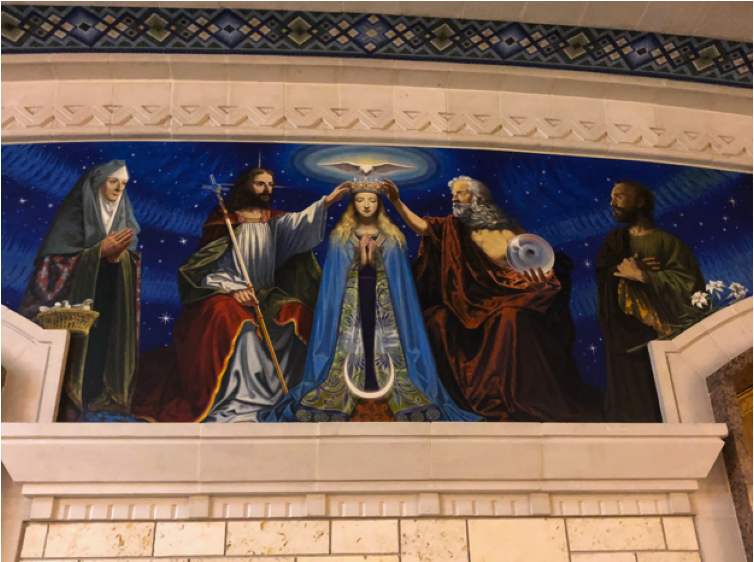 It is summer! Yay! Time for adventures, vacations and travel to places near and far. I know that some of you will be staying nearby, camping in the mountains, going to concerts, hanging out people watching in Old Town Square. Others will be journeying to foreign lands, climbing castle walls, wandering through medieval cathedrals, marveling at the architecture of Ottoman mosques or rummaging through ancient archaeological sites. As you pack, think about how you will encounter God in your journeys. Now, we know that God is everywhere, present in every place, and that every person we meet bears the very image of God. So, in one sense, we need not “go” anywhere to encounter God. We just need to open our eyes to the craggy peaks, touch the leaves with our fingers, listen to the stranger with our ears, and engage the waitress with our heart. It is a question of focus and openness, stepping away from our Facebook feed and paying attention to the heart of the reality we are immersed in. For there isGod, in splendor and grandeur and pain and suffering and noise and silence. One of the joys and challenges of travel is the opportunity to visit sites sacred to communities very different from our own. On our recent trip to Quebec, I dragged Ivan into every cathedral we encountered – and there were lots! But to our UCC eyes, they seemed very foreign: every church seemed dedicated to Mary, there was a sensory overload of gild and images and statues. Saints peered down from every window, apocryphal scenes from the life of Sts. Anne and Joachim (Mary’s parents) filled mosaic panels across the ceiling, giant bleeding crucifixes adorned every side chapel, and Jesus was very, very White. One cathedral (St. Anne de Beaupre, the largest pilgrimage site north of Mexico, credited with miraculous healings, receives a half million visitors yearly) displayed holy relics of St. Anne, large forearm bones given by two Popes from the basilica of St. Paul Outside the Walls in Rome. There were pictures of 17thcentury missionary martyrs being killed by nearly naked “savages,” and nuns teaching adoring First Nation children. I was particularly struck by huge images of the “Enthronement of the Queen of Heaven,” where bearded Father and Son crowned the Virgin Mother, while the dove of the Spirit vaguely hovered nearby (see photo). I wondered, was this a Trinity of Father/Mother/Son, or maybe a Holy Quartet? Now, it would be easy to deconstruct the whole place, to look at it with rational, Protestant eyes. You could see schlock, kitch, superstition, colonialism, even idolatry. I mean, St. Anne isn’t even mentioned in the Bible! (You have to read the second-century Protevangelium of James to get the fanciful back story on Jesus’ parents). In parts of Europe, our Protestant forbearers literally smashed all the statues (“idols!”) in cathedrals. But is that why I went there? To decry the locals, their history and the faith that built a cathedral? I did not eat at McDonalds, but tried poutine; why should my spiritual adventure be different? Now, one way to side-step the unease is to become good and academic. Focus on the amazing architecture. Appreciate the artistry. Learn about the history of the peoples who built this shrine. Photograph the stained glass. Stand apart as a sociologist, and observe the pilgrims praying, wondering about where they are from and what motivated their journey. But do not ponder their faith too much, for that is risky… what if you are drawn into their passion? So I cautiouslyprayed a brief prayer to God for healing at St. Anne’s relic, all the time knowing that it is a fearful thing to fall into the hands of The Living God! So here is the challenge when visiting a spiritual site that is so different: to be open to the Holy as the people whose home it is understand it. Yes, these sites may be totally weird. But the very word weird is rooted in the experience of the supernatural, the uncanny, the uncontrolled spiritual forces of the universe, exemplified in the “weird sisters” of Macbeth. So… you are privileged to be a guest in a place built by people who loved and worshiped God –- maybe, yes, in a very weird way. So suspend your criticisms, and use your sanctified imagination to enter the lives of those people. They were in touch with something that made them sacrifice wealth and energy and even their lives. They brought children to the font, filled with hope despite an uncertain future. They knelt and prayed for their daily bread, for forgiveness of their sins, for deliverance from times of trouble. They gave alms to the poor, assisted their neighbors rebuild burned out homes, and tended their sick. They buried their dead in the yard outside, trusting them to the grace and power of a resurrected Christ. You know how to open your spiritual eyes to a Rocky Mountain sunset; use the same creativity to open your heart to a medieval Marian shrine. Stepping out of your spiritual comfort zone and trusting that the ever-present God has something for you even there, is an exciting (and sometimes unsettling) quest. Even in a non-Christian site – a mosque, an ashram, pagan ruin or even a battlefield, muster your courage to experience how God is there. As in the eucharist, nobody believes in “the real absence of God” anywhere. Perhaps that is the time, that is the place, that the Still-Speaking God will speak to you. Peace and blessed journeys, Rev. Dr. Mark Lee Director of Christian Formation (Adults) AuthorThe Rev. Dr. Mark Lee brings a passion for Christian education that bears fruit in social justice. He has had a lifelong fascination with theology, with a particular emphasis on how Biblical hermeneutics shape personal and political action. Read more about Mark. |
Details
|
 RSS Feed
RSS Feed